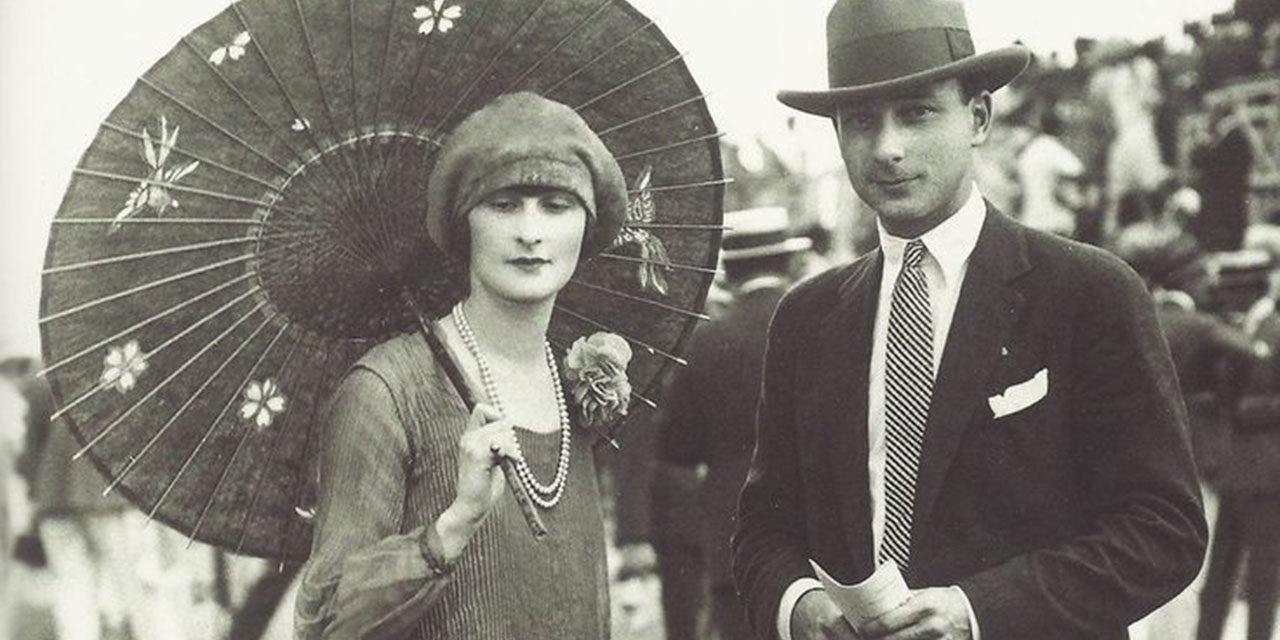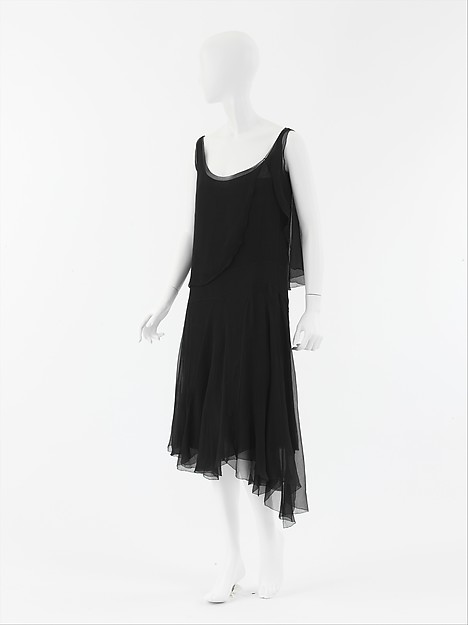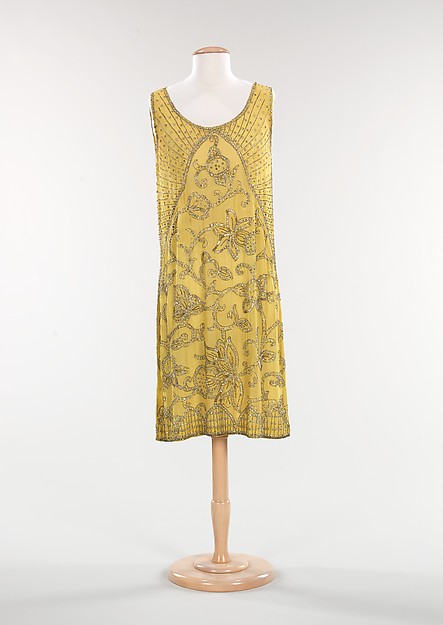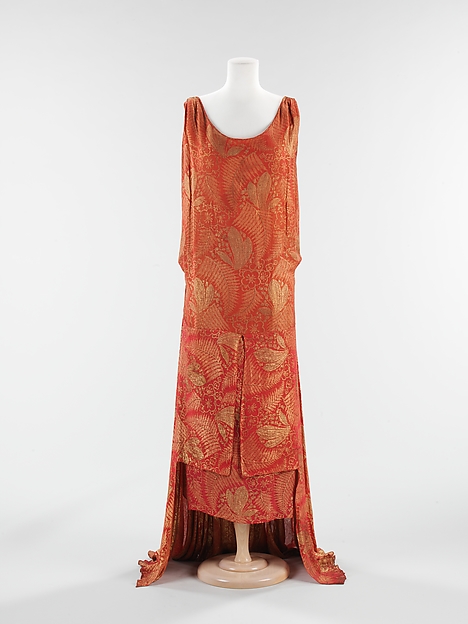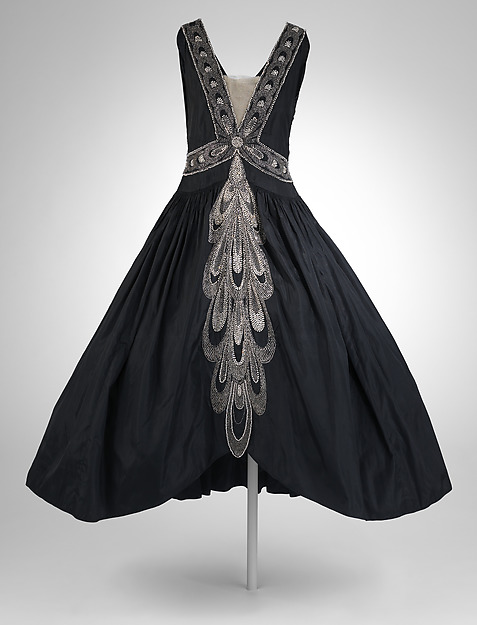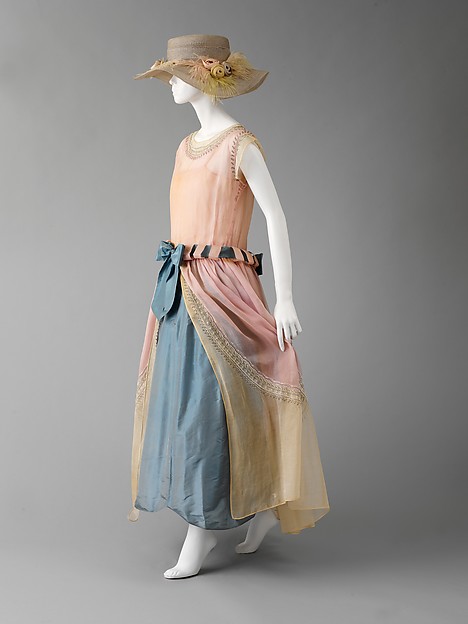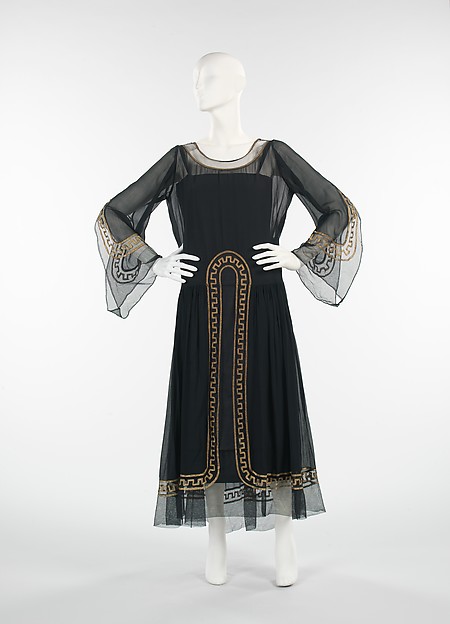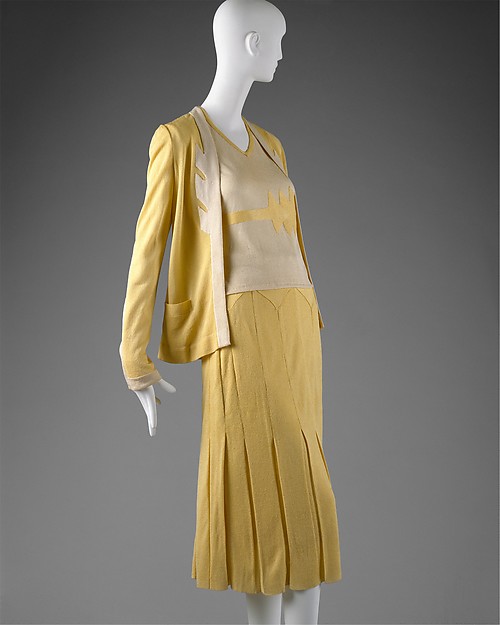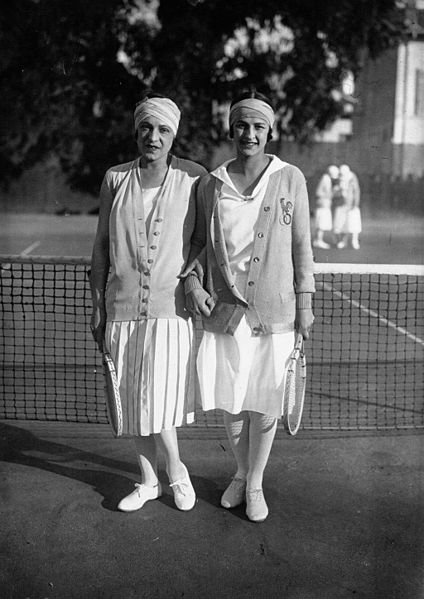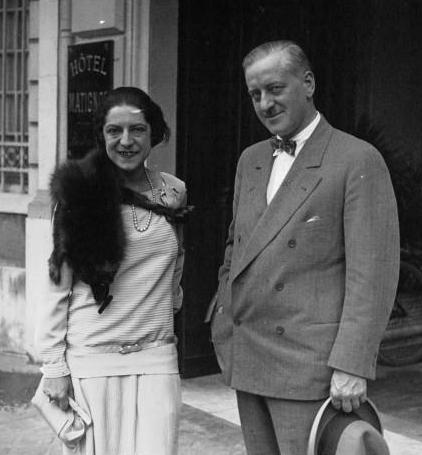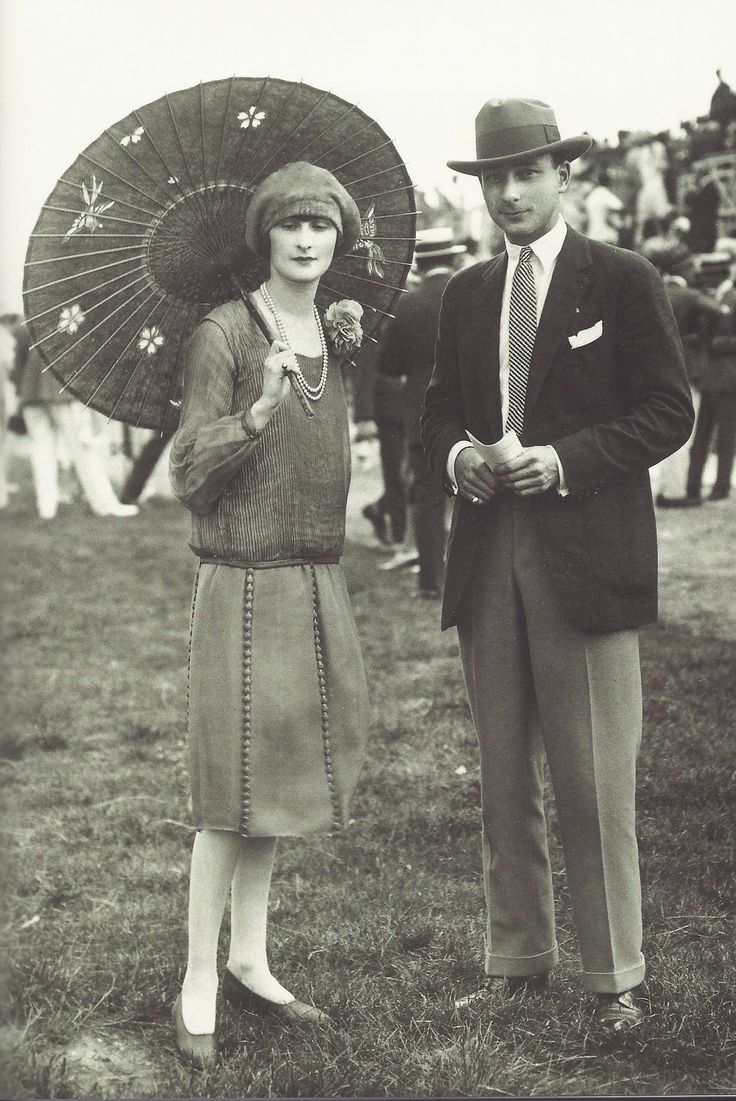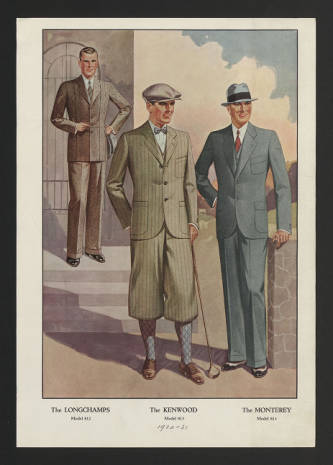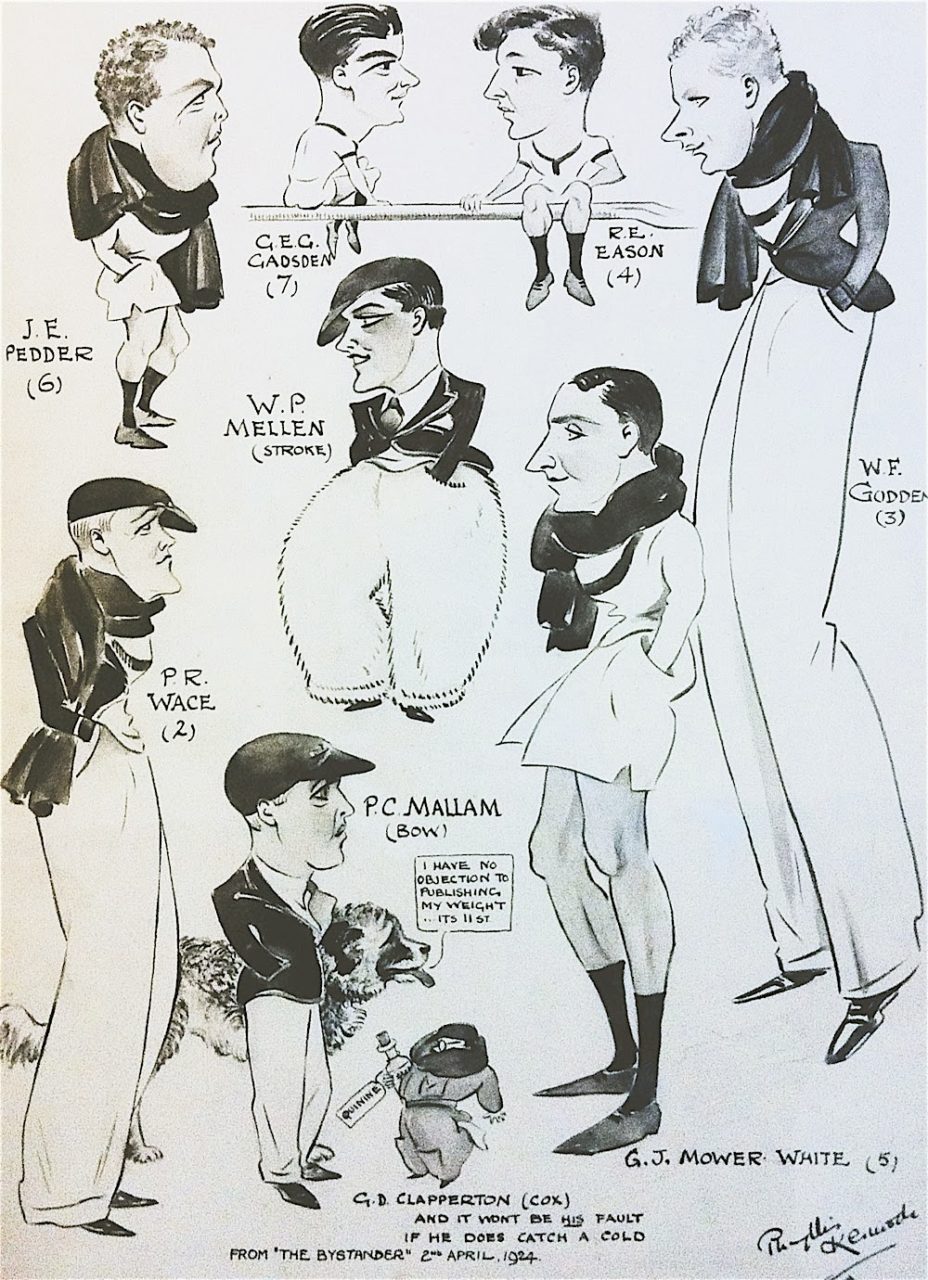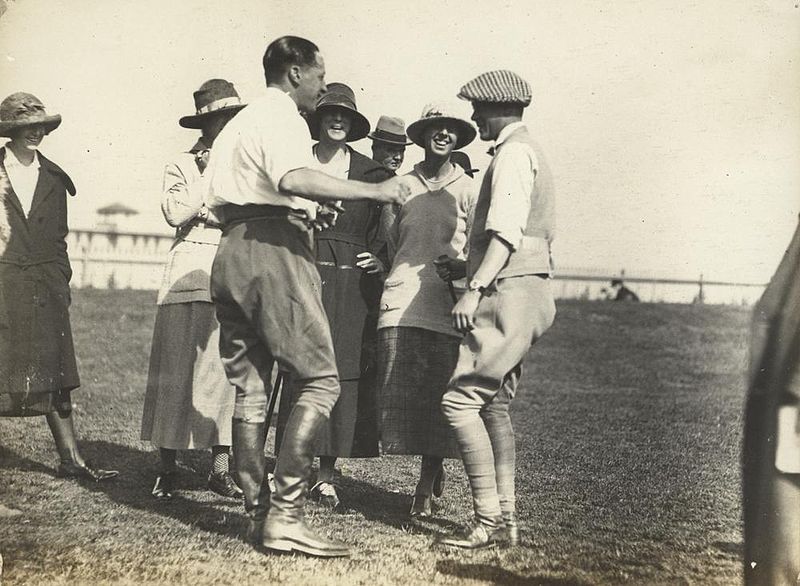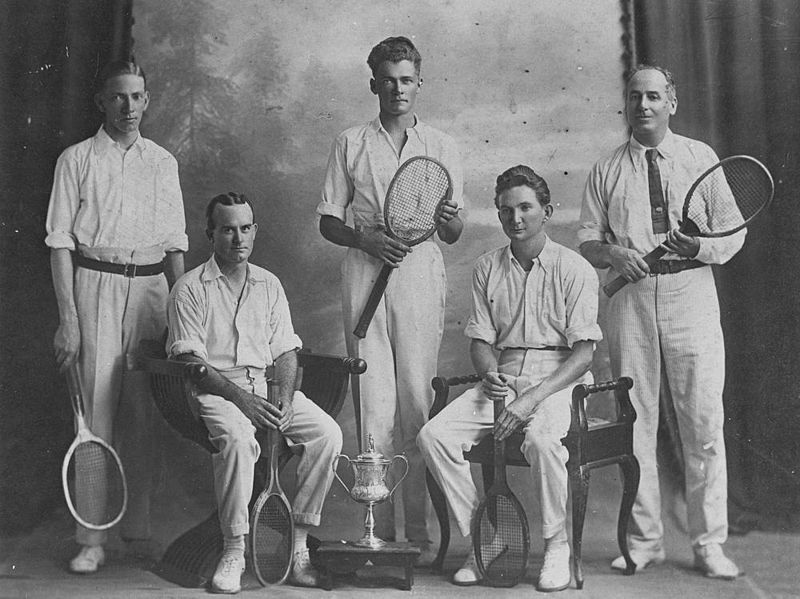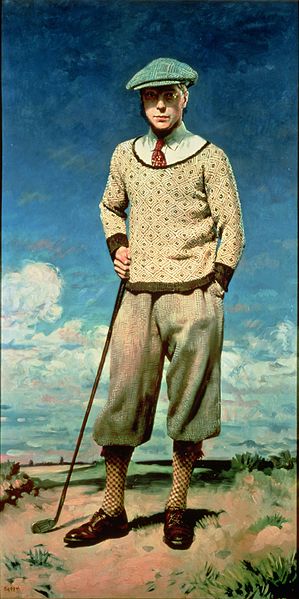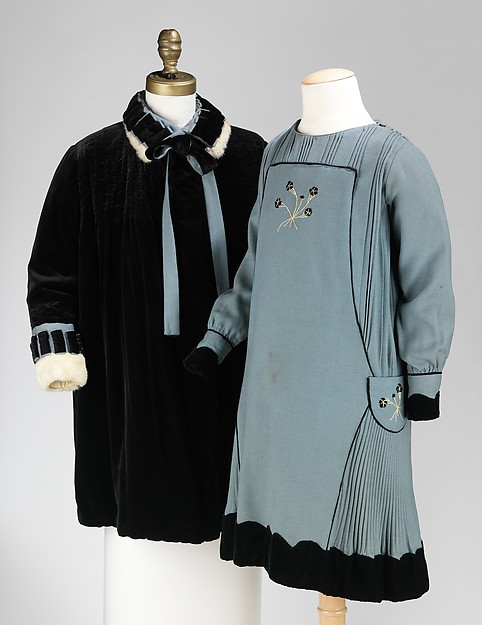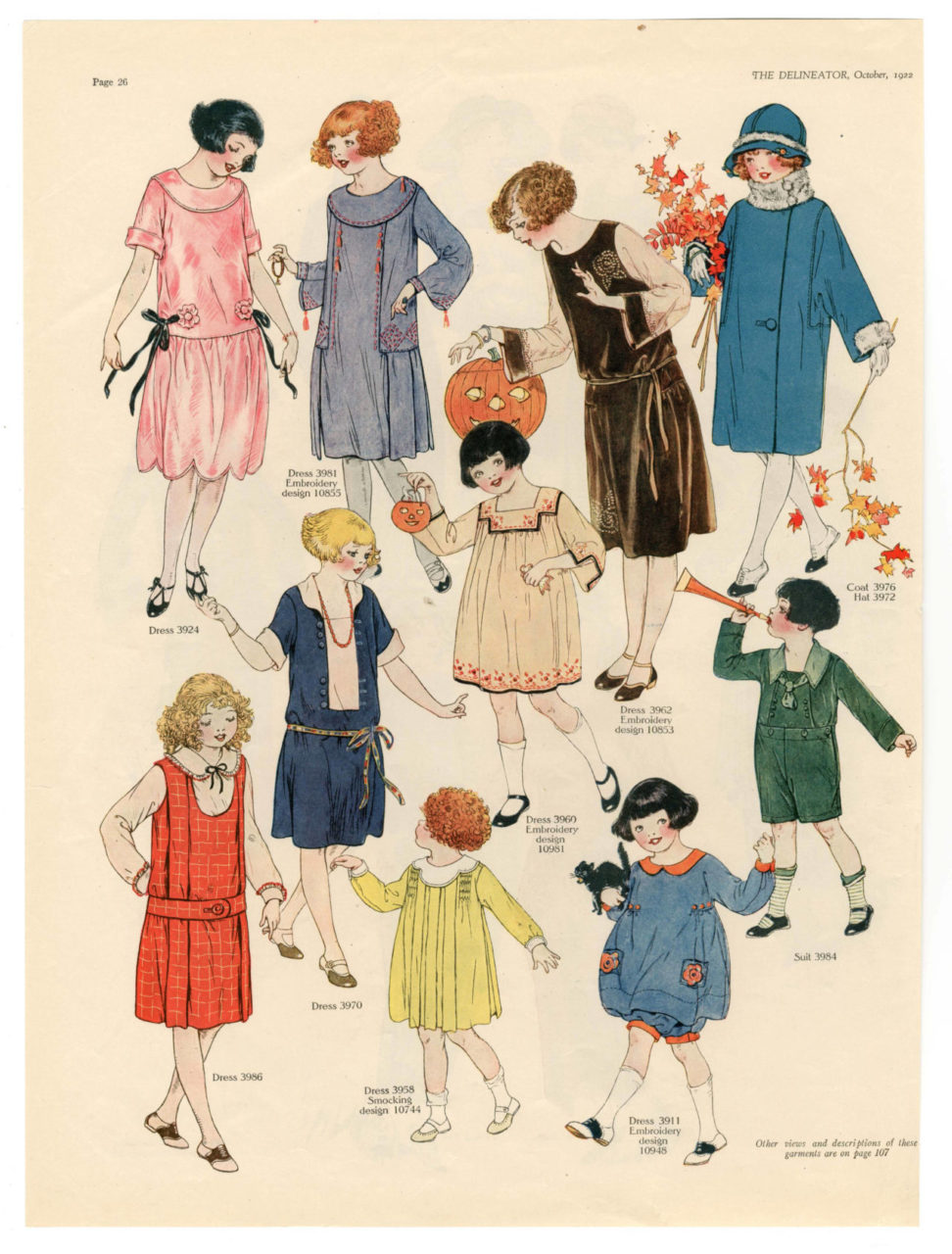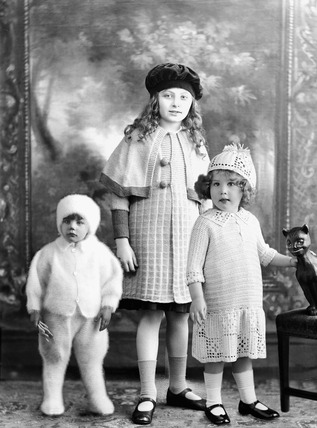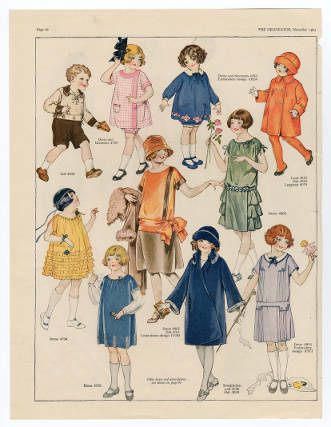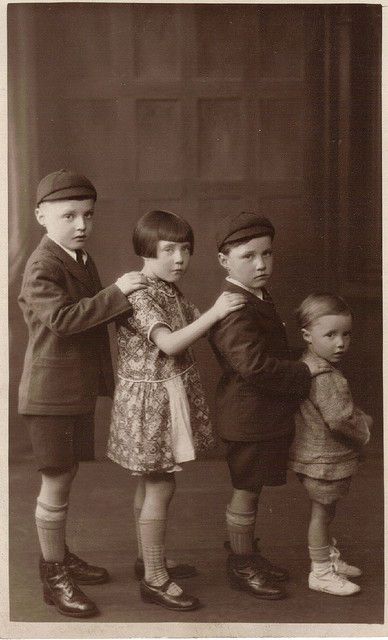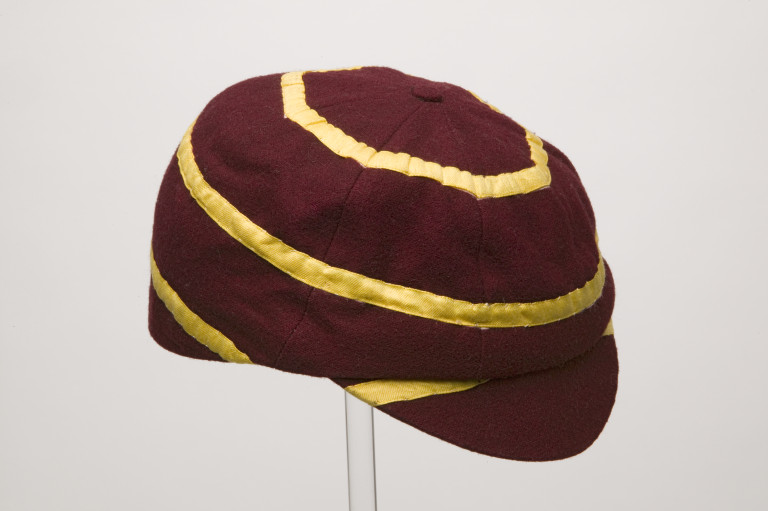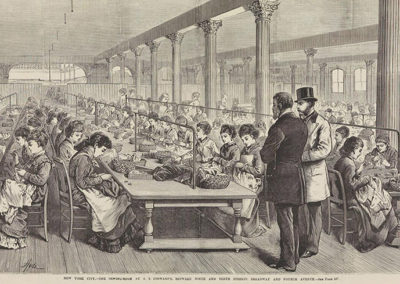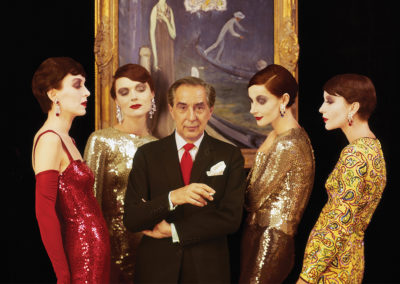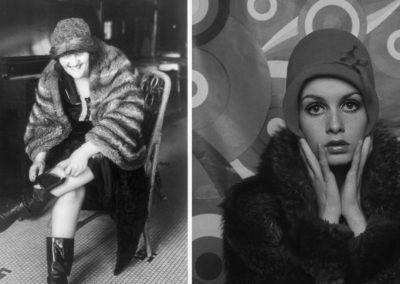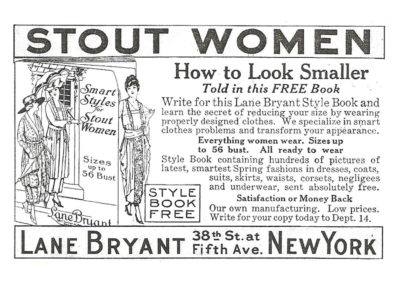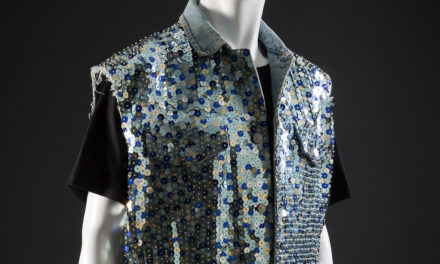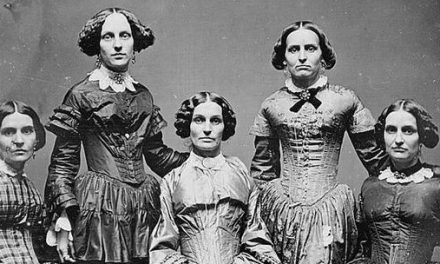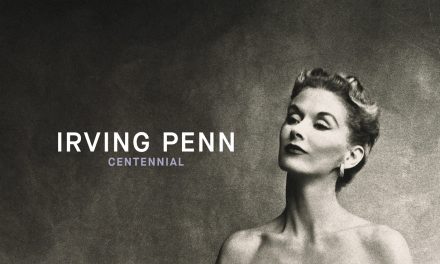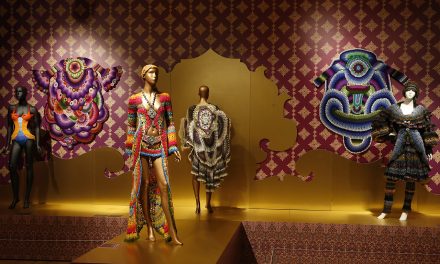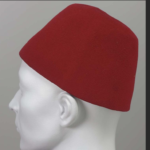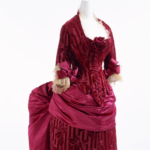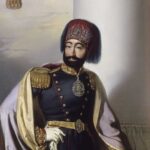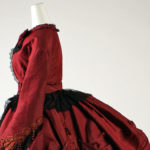OVERVIEW
Twenties fashion is often remembered for its glitz and glamour, though underlying this was a move toward simplicity in dress. For women, this meant shorter skirts and simple shapes, while men enjoyed casual suits.
Womenswear
At the dawn of the 1920s, the world was still reeling from the First World War. The conflict, which ended just over a year before the new decade began, had a fundamental and irreversible effect on society, culture, and fashion. Essential to these new styles was a simplicity that had not previously been seen in women’s fashion. Dress historian Jayne Shrimpton writes in Fashion in the 1920s:
“The development of a more convenient, modern female wardrobe was a major trend of the 1920s and was achieved through the progressive simplification of dress as the decade advanced – a rejection of formality and multiple layers, in favour of comfort and a lighter, more natural effect.” (13-14)
This simplicity created the popular tubular “la garçonne” look that dominated much of the decade. Also known as the flapper, the look typified 1920s dress with a dropped waist and creeping hemlines that could be created in economical fabrics. Coco Chanel helped popularize this style (Fig. 1) and was a prominent designer during the period. Both waistlines and hemlines followed similar, though inverse, projections throughout the decade, as waistlines dropped until 1923 before beginning to rise again in 1928; while hemlines rose until 1926, when they started to fall again (Pel 51).
Evening dresses sometimes still nearly reached the ground, though many of the popular styles followed the hemline trends of daywear, as demonstrated in the difference between a 1924 evening dress (Fig. 2) and an evening dress from 1929 (Fig. 3). While simplicity in construction was key to both daywear and eveningwear, the latter benefited from ornate decoration: beadwork, sequins, and embroidery all helped create the glamorous nighttime looks of the decade, like this yellow evening dress made of silk and rhinestones (Fig. 2).
Fig. 1 - Gabrielle Chanel (French, 1883–1971). Evening ensemble, 1925. Silk. New York: The Metropolitan Museum of Art, 1994.474a, b. Gift of Gytha M. Rupp, 1994. Source: The Metropolitan Museum of Art
Fig. 2 - Designer unknown (American). Evening dress, 1924. Silk, rhinestones. New York: Brooklyn Museum Costume Collection at The Metropolitan Museum of Art, 2009.300.1247. Brooklyn Museum Costume Collection at The Metropolitan Museum of Art, Gift of the Brooklyn Museum, 2009; Gift of Mrs. Fred May, 1957. Source: The Metropolitan Museum of Art
Fig. 3 - Bergdorf Goodman (American). Evening dress, ca. 1929. Silk, metal. New York: Brooklyn Museum Costume Collection at The Metropolitan Museum of Art, 2009.300.304. Brooklyn Museum Costume Collection at The Metropolitan Museum of Art, Gift of the Brooklyn Museum, 2009; Gift of Adelaide Goan, 1961. Source: The Metropolitan Museum of Art
Fig. 4 - Jeanne Lanvin (French, 1867–1946). Robe de Style, Fall/winter 1926–27. Silk, glass. New York: The Metropolitan Museum of Art, 1976.30.1a, b. Gift of Mrs. Gilbert W. Chapman, 1976. Source: The Metropolitan Museum of Art
Fig. 5 - Jeanne Lanvin (French, 1867–1946). Robe de Style, 1922. Cotton, silk, glass, metal. New York: The Metropolitan Museum of Art, C.I.62.8.3a, b. Gift of Mrs. Stephen C. Clark, 1962. Source: The Metropolitan Museum of Art
Fig. 6 - Jeanne Lanvin (French, 1867–1946). Evening dress, 1925. Silk, metal. New York: Brooklyn Museum Costume Collection at The Metropolitan Museum of Art, 2009.300.2860. Brooklyn Museum Costume Collection at The Metropolitan Museum of Art, Gift of the Brooklyn Museum, 2009; Gift of Helen Appleton Read, 1962. Source: The Metropolitan Museum of Art
Though this was one of the more popular styles, it was by no means the only. In fact, a style popularized by Jeanne Lanvin could not be further from this “androgynous” look. Instead, these dresses had long, full skirts, sometimes even with panniers, like this black and silver “Robe de Style” dress shown here (Fig. 4). They were feminine and romantic, like the pastel dress designed by Lanvin in 1922, accessorized with a straw hat itself removed from the brimless cloche hats that were popular during the twenties (Fig. 5). Lanvin’s dresses were starkly different from the shapeless silhouettes of the flapper, though some interpreted this style with her own feminine twist (Fig. 6).
Another trend for women that enjoyed massive popularity in the twenties was that of sportswear worn as daywear. Sportswear had long been an acceptable form of casual wear for men, but in the 1920s, it also became acceptable for women. The popularity of sports clothes in the 1920s is often attributed, like many of the most popular styles of the twenties, to Coco Chanel, but designers such as Jane Regny and Jean Patou also contributed to the sportswear trend. Patou’s yellow skirt and sweater set show how much tennis clothes influenced design (Fig. 7).
Tennis was the most popular sport for women and thus the most popular inspiration for fashion. Indeed, one of the most popular fashion stars of the early twenties was tennis star Suzanne Lenglen whose short sleeved, pleated tennis dress and bandeau were created for her by Patou (Pel 14). Her style both on (Fig. 8) and off the court (Fig. 9) inspired the masses. Shrimpton writes, “By the late 1920s, following her lead and embracing wider fashion trends, sleeveless, knee-length shift-like tennis dresses were fashionable” (59). So popular were elements of these sports clothes that in a 1928 issue of The Tatler, M.E. Brooke wrote, “Sports clothes have been developed to such an extent that they may go to lunch at the fashionable restaurants; as a matter of fact they are often worn until the hour of cocktail” (Brooke 276).
Fashion in the 1920s was all about the whole look and there were trends in how the body itself was fashioned. The simple lines and androgynous shapes of fashion looked best on bodies free from curves. Through exercise, diet, and various shaping undergarments, women attempted to achieve this look. The sporting look also helped facilitate a mode for suntanned skin. Many women cut their hair into a bob, a popular hairstyle that emerged early in the decade. Hairstyles kept getting shorter first with the shingle and then with the Eton crop, but like hemlines, as the decade drew to a close, women were starting to grow their hair longer again. The cloche hat became an extremely popular accessory that looked best with these short hairstyles.
While the designers mentioned above created and sold their styles, as did department stores and the like, the simplicity of the prevailing mode throughout the twenties made it easy for women of all means to recreate those styles at home. This, combined with inspiration taken from typical working-class girls’ attire and the use of materials such as jersey and artificial silk, led to what has been deemed a “democratization of fashion” in the 1920s. Anyone could achieve the fashionable look even if it meant the simple lines were created with a less expensive material and made at home rather than in an atelier. This phenomenon is studied by fashion historians but was also felt during the period. In her book Success Through Dress, The Hon. Mrs. C.W Forester declared, “Dress is now no sign of social status; in fact, rather the contrary” (62).
Fig. 7 - Attributed to Jean Patou (French, 1880–1936). Dress, ca. 1927. Silk. New York: The Metropolitan Museum of Art, 1998.347a–d. Purchase, Various Funds, 1998. Source: The Metropolitan Museum of Art
Fig. 8 - Agence de presse Meurisse (French). French tennis players Suzanne Lenglen and Julie Vlasto in Cannes in 1926, 1926. Source: Wikimedia
Fig. 9 - Agence de presse Meurisse (French). French tennis player Suzanne Lenglen with her manager Charles C. Pyle (1882-1939) in 1926, 1926. Source: Wikimedia
Fig. 10 - Photographer unknown. France, Horse racetrack, 1926. Source: Pinterest
Menswear
The most significant development in men’s fashion occurred in two unique kinds of trousers: the Oxford bags and the plus-fours. Oxford bags grew in popularity around 1924-25 when undergraduates at Oxford adopted these wide-legged trousers. Though the origin of the style is contentious, it is generally agreed that it derived from the trousers that rowers on Oxford’s crew teams pulled on over their shorts, and you can see how The Bystander satirized this in 1924 (Fig. 2). The original style was about 22 inches wide at the bottom, several inches wider than the average men’s trouser leg. Oxford undergraduates began wearing these around the university and soon the style spread. As the style spread, so too did the width of the trouser legs until at one point they reached up to 44 inches wide. The trousers were made out of flannel and came in a variety of colors. They were mostly worn by youths – perhaps the male counterparts of the flapper – and became a favorite of Britain’s “Bright Young People,” a group of wealthy, aristocrats known for their antics in London’s nightlife.
The other development in menswear in the twenties was the plus-fours. Plus-fours developed out of ordinary knickers – short-legged trousers that gather around the knee – and like Oxford bags were a bit baggier version of their precursor. They had four extra inches of material (hence the name) but instead of extending the trouser leg, they still fastened around the knee and the extra material hung over the band, creating the baggy look as seen at a racecourse in 1920 (Fig. 3). Often worn with a sweater, plus-fours were popular golf attire, but much like how tennis-wear crept into casual womenswear, this style was also popular daywear for men, as was tennis-wear for men, too. You can see the casual way men dressed to play tennis, though some still wore ties in 1920 (Fig. 4).
Fig. 1 - Artist unknown. Fashion Plate, 1920-1939. New York: Costume Institute Fashion Plates. Source: The Met Digital Collections
Fig. 2 - Phyllis Kenworth. The Bystander, Oxford, 1924. Source: Hear the Boat Sing
Fig. 3 - Charles Bertram Bell. Exchanging jokes at Ascot racetrack, Brisbane, August 1920 Prince of Wales and a group of young socialites enjoying a chat at the racetrack., 1920. John Oxley Library, State Library of Queensland. Source: Wikimedia
Fig. 4 - F.A. Whitehead. Ipswich City tennis club members, 1920. John Oxley Library, State Library of Queensland. Source: Wikimedia
Fashion Icon: Edward, Prince of Wales
Like womenswear, the look had to be completed. Men generally wore their hair short and covered with a hat: popular styles included the felt hat, the fedora or trilby, flat caps or the straw boater depending on the season and the man’s status. Men moved away from uncomfortable lace-up boots and preferred lower-cut oxfords or brogues (Shrimpton 33-34).
Fig. 1 - William Orpen (Irish, 1878-1931). Edward, Prince of Wales, Captain of the Royal and Ancient Golf Club of St Andrews, 1927. Oil on canvas. St. Andrew's: Royal and Ancient Golf Club, Scotland. Source: Wikimedia
CHILDREN’S WEAR
Young girls wore simple loose dresses often made in cotton or linen, though velvet, like this coat, was popular for special occasions (Fig. 1). The length of the dresses varied by age getting longer as the girls got older (Shrimpton 49). Peter pan collars, smocking, patterned fabrics, and embroidery were all popular in girls’ clothing throughout the decade (Shrimpton 49). Many styles looked to womenswear for inspiration, though in the twenties, children’s wear was not just a miniature version of adult clothing (Grindstaff). There were modifications, but many popular styles for women in the decade already looked girlish, so it made sense to dress girls in similar styles.
Fig. 1 - Designer unknown (American). Ensemble, 1928-30. Wool, silk, fur. New York: The Metropolitan Museum of Art, 2009.300.956a, b. Brooklyn Museum Costume Collection at The Metropolitan Museum of Art, Gift of the Brooklyn Museum, 2009; Gift of Colonel and Mrs. Horace Figuers, 1973. Source: The Met
Fig. 2 - Artist unknown. 1921-1940, Plate 011, 1921-1940. New York: Costume Institute Fashion Plates. Gift of Woodman Thompson. Source: The Met Digital Collections
Fig. 3 - Alexander Bassano Photographic Studios. Montage showing three children modelling knitwear: 1920s, 1922-24. London: Museum of London, 001368. Source: Museum of London
Fig. 4 - Artist unknown. 1921-1940, Plate 032, 1921-1940. New York: Costume Institute Fashion Plates. Gift of Woodman Thompson. Source: The Met Digital Collections
Like girls’ clothing, the length of a boys’ trouser was determined by his age. Young boys wore shorts with a tunic or sweater, while older boys began wearing long trousers, often with similar tops. Like men, Fair Isle sweaters and blazers were popular for young boys, with blazers often a required component of a school uniform, like the uniforms worn by the young boys below (Fig. 4). Like both womenswear and menswear, boys’ clothing was inspired by sportswear as the flannel trousers and woolen blazers of cricket and tennis became acceptable daywear for boys (Shrimpton 51). Uniforms were literally topped off with caps that looked inspired by cricket, like this one below, as well (Fig. 6).
The most important development in babywear during the decade was the rise of the romper which we might now refer to as a onesie, an example seen on the smallest model above (Fig. 3). Shrimpton writes:
“Rompers (first offered by Harrods in 1919) were revolutionary new garments – like small boiler suits, they had long sleeves, a yoked bodice and short knickerbockers. Made in plain, easily laundered fabrics, these were convenient for mothers and enabled much more freedom of movement for babies at the crawling stage and toddlers than traditional cumbersome petticoats.” (47)
This new simplicity in dress reached nearly everyone: from women to men, young boys to young girls, and even the tiniest members of society.
References:
- Brooke, M. E. “The Highway of Fashion.” The Tatler (February 1928).
- Forester, Marian Elizabeth. Success Through Dress. Southampton: The Camelot Press Limited, 1925. http://www.worldcat.org/oclc/558907721.
- Grindstaff, Thomma Lyn. “1920 Children Fashion Facts.” http://childrens-clothing.lovetoknow.com/1920-childrens-fashion-facts
- Laver, James, Amy De La Haye, and Andrew Tucker. Costume and Fashion: A Concise History. 5th ed. New York: Thames & Hudson, 2012. http://www.worldcat.org/oclc/966352776.
-
Pel, Martin, Terence Pepper, Dennis Nothdruft, and Tessa Hallmann. 1920s Jazz Age Fashion & Photographs. London: Unicorn, 2016. http://www.worldcat.org/oclc/957507425.
- Shrimpton, Jayne. Fashion in the 1920s. Oxford: Shire Publications, 2013. http://www.worldcat.org/oclc/990575701.
- Victoria and Albert Museum. “History of Fashion 1900-1970,” July 11, 2013. http://www.vam.ac.uk/content/articles/h/history-of-fashion-1900-1970/.
- ———. “Introduction to 20th-Century Fashion,” October 18, 2012. http://www.vam.ac.uk/content/articles/i/introduction-to-20th-century-fashion/.
Historical Context
Wikipedia: 1920-1929
Events:
- 1920 – The 19th Amendment to the US Constitution gives women the right to vote. Some believe that the women’s rights movement affected fashion, promoting androgynous figures and the death of the corset. The Prohibition Era begins in the US but is largely ignored by fashionable young men and women of the time. “Flappers” dance the night away to jazz tunes at illegal speakeasies.
- 1922 – Howard Carter and George Herbert, 5th Earl of Carnarvon, discover the tomb of Ancient Egyptian ruler Tutankhamun. Fashion designers are inspired to use moths from ancient cultures in their creations.
- 1923 – The Broadway show Runnin’ Wild includes the popular tune ‘The Charleston’. It becomes a dance craze, requiring low-waisted dresses with fullness at the hemline to kick up the heels.
- 1924 – The diplomatic visit of Edward, Prince of Wales to the US popularizes a kind of short breeches for men- plus fours.
- 1925 – Fashion designers make up a large number of the artists who display their luxury wares at the “Exposition Internationale des Arts Décoratifs et Industriels Modernes” in Paris, which gave art deco its name.
- 1926 – The ideal haircut for showcasing cloche hats- the fashionable Eton crop- is first mentioned in The Times. It is popularized by Josephine Baker, an African American expatriate singer, dancer, and entertainer, who becomes an overnight sensation at the Foiles Bergere music hall.
Primary/Period Sources
Resources for Fashion History Research
To discover primary/period sources, explore the categories below.
Have a primary source to suggest? Or a newly digitized periodical/book to announce? Contact us!
Periodicals (Digitized)
Filmography - General
Filmography - Stars
Secondary Sources
Also see the 20th-century overview page for more research sources... or browse our Zotero library.
Online
Books/Articles

